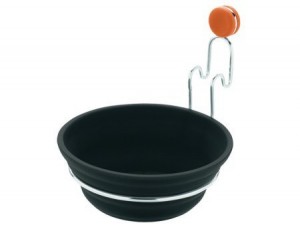Advantages to Using an Egg Poacher Cup
In the cooking world poaching an egg rarely has anything to do with hunting season, but it doesn’t require a special license—just knowledge of the process and the appropriate tools to accomplish the goal.
What It Requires
Poaching an egg requires a heat source, a receptacle capable of holding a whole raw egg, the egg, and often water. The receptacle is called an egg poacher cup and can come in a variety of materials, some non-stick, and some not. The poaching tray could contain a single egg cup or six or more. So long as each egg sits in its own egg cup, the number of cups is irrelevant.
When using an egg poacher cup, prevent the cooked egg white from sticking to the cooking surface, lest removing it tears it. If the surface is non-stick, consider using a cooking spray or lubrication, whether butter or equivalent, oil, or water. Egg freshness plays a part, as well. Eggs older than a week can have thinned egg whites, degrading its cohesiveness when cooked. Older eggs can be poached, of course, but for best results, the fresher the better.
Important Considerations
While the act of poaching eggs is quite simple, several caution areas could ‘make or break’ the results:
- Egg Separation: Whether using a holder with a dozen or just one egg poacher cup, the eggs should be separated from each other, forming an independent unit when cooked. Never poach more than one egg together in a single egg poacher cup. The eggs may not cook properly, and they will cook into a joined food.
- Pan Depth: The pan holding the egg poach cup or cups must be deep enough to fully cover the egg, generally at least three inches deep.
- Water Temperature: The water temperature should be between 160 and 180 degrees Fahrenheit (71 to 82 degrees Celsius). If the water is too hot, the egg whites will be tough, and the yolk will be overcooked —the antithesis of poaching an egg. If the water is too cold, however, the egg will separate before cooking.
Hints and Tips
While poaching an egg is easy, some hints and tips can make the process even easier and greatly improve the flavor and appearance:
- If a cooking temperature gauge isn’t readily available to test the water temperature, a working guide for the correct temperature range is to bring the water to a boil then lower the heat to simmer the water.
- If someone likes the slight flavor, a touch of white vinegar in the water can slightly toughen the outer skin of the egg white, allowing it to form a more reliable seat for the rest of the egg.
- Carefully break the egg into its cup, preventing shell fragments from falling into the egg. Using a cup prevents a bad egg from spoiling the water and the rest of the eggs. Check the condition of the egg before poaching it. If bad, only one egg is lost—not the entire batch.
- Don’t overcook or under-cook a poached egg. Poach an egg for approximately three minutes for a medium doneness; two minutes for cooked egg whites and a raw yolk.
- Poached eggs are best when served immediately after pulled the poacher from the water.
- If cooking for a larger number of people, advance poaching is possible. Simply poach them halfway, seal the semi-poached eggs, and refrigerate. When ready to serve, immerse in barely simmering water until the poaching is finished and serve immediately.
Summary
While using an egg poacher cup isn’t necessary, appearance plays an important part in how food is perceived. The cup prevents stringy whites, maintains even cooking, and presents a bright, tasty dish for most egg lovers while maintaining the egg’s nutritional value and can make cleaning up a breeze.

Leave a Reply